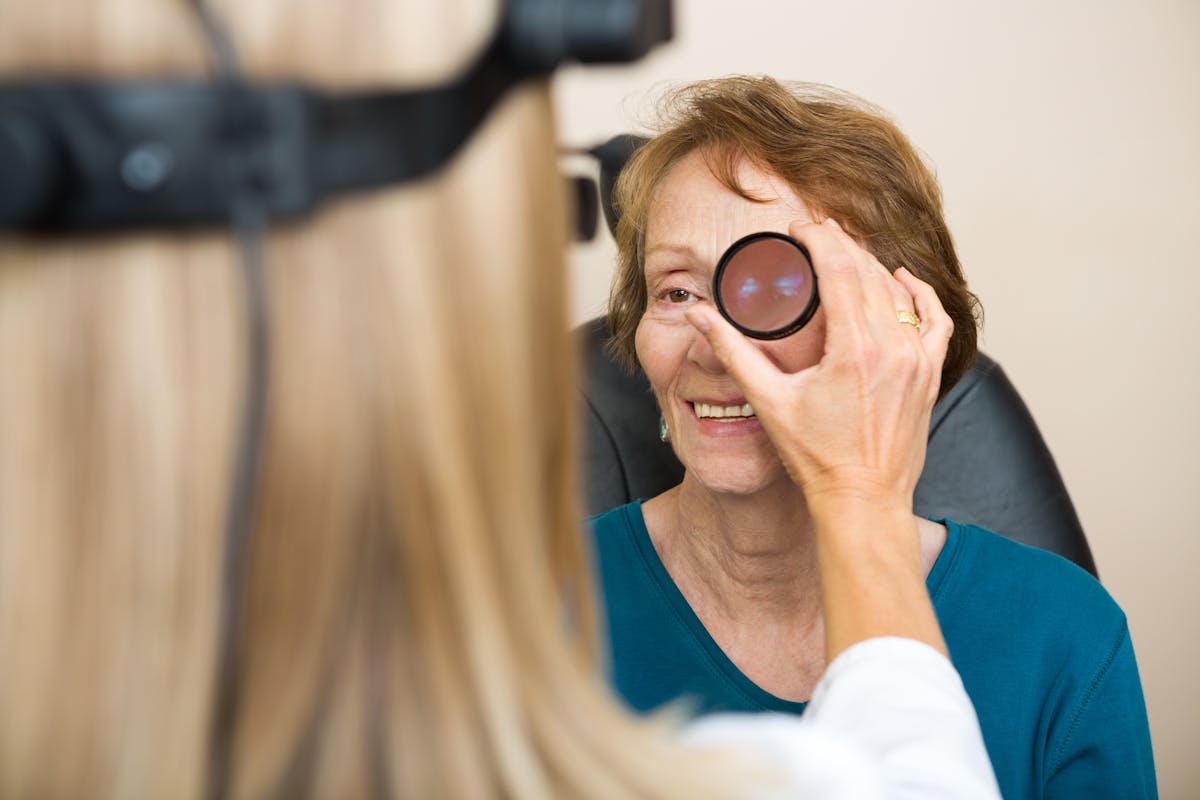Why Seniors Need Yearly Eye Exams

Would you be surprised to learn that almost 11 million people over the age of 12 have a vision issue that requires some kind of correction? Many of us take vision for granted until we begin to experience problems. Unfortunately, that approach might prevent the early intervention necessary to keep a small problem from becoming a big one.
In honor of National Eye Exam Month in August, we are sharing why it’s a good idea to schedule a yearly vision checkup.
The Importance of a Yearly Visit to the Eye Doctor
Guidelines from the American Academy of Ophthalmology recommend adults over the age of 65 have an annual vision exam that includes dilating the eyes. This simple practice allows the doctor to get a better look at the retina and optic nerve. Doing so helps them identify potential problems and intervene early.
A yearly vision exam helps identify changes in the eye that are common among seniors, such as:
- Cataracts: This condition causes clouding of the eye’s lens. It can cause vision to become blurry. Fortunately, cataracts can usually be corrected with an outpatient procedure. Left untreated, however, it can lead to blindness. In fact, research shows that cataracts account for 50% of all cases of blindness around the globe.
- Glaucoma: This is a group of diseases that damage the optic nerve in the eye. It is a very serious condition that can cause vision loss and blindness. While the damage caused by glaucoma can’t be reversed, early intervention and treatment may help slow the progression.
- Macular degeneration: This age-related vision problem affects the light-sensitive tissue in the eye. Macular degeneration symptoms are gradual and typically not painful. They include loss of central vision, trouble recognizing faces, feeling the need for increased lighting to properly see, and difficulty reading printed words.
- Diabetic retinopathy: This vision problem is a complication of diabetes. It happens when high blood sugar levels cause damage to blood vessels in the retina. These blood vessels can swell and leak or close, stopping blood from passing through. Among its most common symptoms are blurry vision, problems with night vision, seeing floaters in your field of vision, and colors appearing washed out or faded.
- Retinal tearing: With aging comes a higher risk for small tears in the inner lining of the eye. These can lead to a dangerous retinal detachment or other conditions that impact vision, like black spots or floaters. Surgery may be needed to repair a torn retina.
Surprisingly, an ophthalmologist might be able to detect other health problems during a vision exam, including high blood pressure, diabetes, and some autoimmune diseases.
Does Medicare Cover Vision Exams?
Although Medicare usually doesn’t pay for routine eye exams or corrective lenses, Medicare Part B does cover some vision exams. Check with your eye doctor for further clarification on coverage.
For older adults on a limited income, there might be local programs or funding available to help defray these costs. Call the agency on aging to see if they are aware of any resources. Another option is the American Academy of Ophthalmology Foundation. The organization provides free or low-cost exams to seniors who qualify through the EyeCare America program.
Lifestyle and Healthy Aging
Staying on track with routine health screenings, including a yearly vision exam, is just one of many components of healthy aging. How Lifestyle Impacts Healthy Aging is a good article to learn about other ways you can protect your health as you grow older.